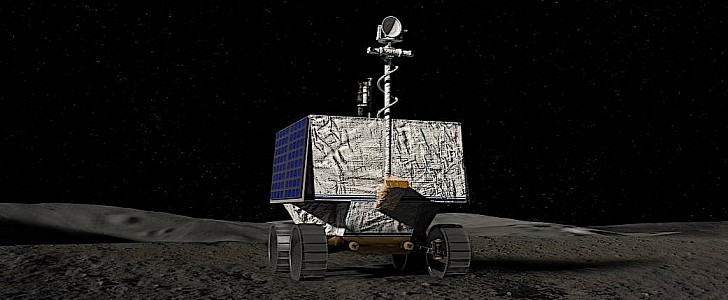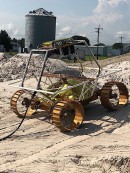NASA is determined to get to the Moon and possibly even create a permanent base there. For that to happen, there might be a need for at least some of the resources needed for the people there to be exploited locally rather than be carried up from Earth at enormous costs.
NASA calls this type of localized operation in-situ exploitation, and at least in this stage, that means finding water on the Moon. To do that, the space agency will rely on a brand new and specialized rover called Viper. That’s short for Volatiles Investigating Polar Exploration Rover, and basically translates into a water-hunting machine.
About the size of a golf cart, the Viper is fitted with four scientific instruments, including a 1-meter drill to be used to dig holes in the Moon. The machine will do this at our planet satellite's South Pole, the same place where astronauts are scheduled to arrive as part of the Artemis program three years from now.
Earlier this week, NASA said it would soon announce the name of the company tasked with getting the rover to the Moon under the provisions of the Commercial Lunar Payload Services program. On Friday (June 12) it did, confirming the company in charge of the rover’s well-being is Pittsburgh-based Astrobotic.
Astrobotic is one of three companies (alongside Intuitive Machines and Orbit Beyond) that in the summer of 2019 were announced as the main candidates for the delivery of various science and technology payloads to the Moon in preparation for human return.
The company will receive $199.5 million to get the job done with the help of a lander called Griffin. there is no info on the rocket that will carry Griffin and Viper into space for now.
“The VIPER rover and the commercial partnership that will deliver it to the Moon are a prime example of how the scientific community and U.S. industry are making NASA’s lunar exploration vision a reality,” said in a statement NASA Administrator Jim Bridenstine.
“Commercial partners are changing the landscape of space exploration, and VIPER is going to be a big boost to our efforts to send the first woman and next man to the lunar surface in 2024 through the Artemis program.”
About the size of a golf cart, the Viper is fitted with four scientific instruments, including a 1-meter drill to be used to dig holes in the Moon. The machine will do this at our planet satellite's South Pole, the same place where astronauts are scheduled to arrive as part of the Artemis program three years from now.
Earlier this week, NASA said it would soon announce the name of the company tasked with getting the rover to the Moon under the provisions of the Commercial Lunar Payload Services program. On Friday (June 12) it did, confirming the company in charge of the rover’s well-being is Pittsburgh-based Astrobotic.
Astrobotic is one of three companies (alongside Intuitive Machines and Orbit Beyond) that in the summer of 2019 were announced as the main candidates for the delivery of various science and technology payloads to the Moon in preparation for human return.
The company will receive $199.5 million to get the job done with the help of a lander called Griffin. there is no info on the rocket that will carry Griffin and Viper into space for now.
“The VIPER rover and the commercial partnership that will deliver it to the Moon are a prime example of how the scientific community and U.S. industry are making NASA’s lunar exploration vision a reality,” said in a statement NASA Administrator Jim Bridenstine.
“Commercial partners are changing the landscape of space exploration, and VIPER is going to be a big boost to our efforts to send the first woman and next man to the lunar surface in 2024 through the Artemis program.”







